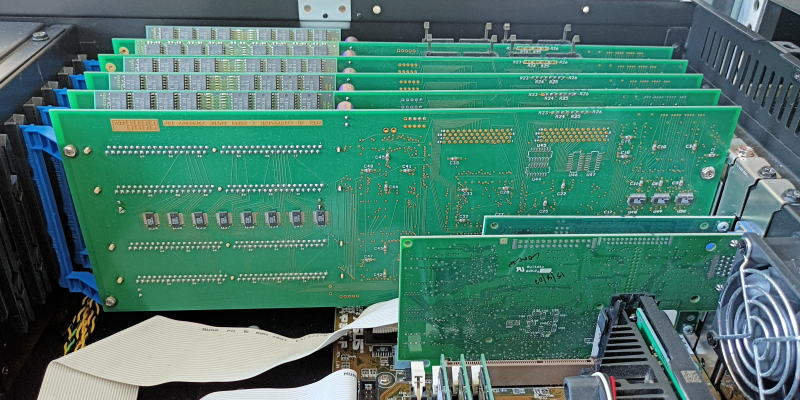
AURA, Adam, CPU slice, PRESENCE, Cortex
The Department of Computer Science was privileged to have very good hardware research support for many years. This allowed the Advanced Computer Architectures group to design and build complex high level computer hardware using the latest technology.
One example of this was the development of many versions of neural network based associative memory in hardware for very high performance. Shown here are some examples of such hardware.
The use of neural networks is now widespread but in the 1980’s and 1990’s they were very much a research technology. The department worked on Associative Memory based on neural networks as a model for how the brain might process information. An associative memory allows access to information based on the patterns inherent in the data to be linked. The methods were applied to images for object recognition, to text for text look up, for chemical structure matching and many other problems. On the basis of this research a general approach was developed which was implemented in hardware for high speed.
Early versions of the hardware implemented the Associative memory directly a fast but inflexible approach. Later systems (such as the PRESENCE Card) allowed the systems to be built in re-programmable hardware (FPGA). The PRESENCE card was developed into a large Associative memory Computer called Cortex, as shown here. The system was so successful that a version was bought by Cardiff University for their research.
The CPU slice was developed in research by Dr. Gary Morgan in the 1990s. The idea was to allow users to build a processor by adding hardware slices, a slice might be an accumulator, a register, a sequencer etc. This allowed the user to match the capability of the processor to the task.
The PRESENCE card was a high performance system for pattern matching designed to support Neural Networks. Developed in the 1990s it went on to be sold to companies interested in 3D face recognition and general research.
The Cortex Computer Rack here contains a number of PRESENCE cards. The system allowed the user to build very large neural networks for data manipulation problems. The techniques were developed in applications such as AeronEngine monitoring with Rolls-Royce and Molecular databases with pharmaceutical companies. Cortex went on to be sold as a computer to organisations in the UK and US.